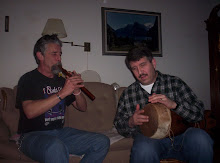Wednesday, September 21, 2011
Armenian Coat of Arms
Independence Day, Armenia
Independence Day is celebrated on 21st September each year in Armenia. It commemorates the referendum held in Armenia on 21st September 1991, after the attempted assassination of President of the USSR, Mikhail Gorbachev.
The Republic of Armenia, is a landlocked mountainous country between the Black Sea and the Caspian Sea in the Southern Caucasus. It shares borders with Turkey, Georgia, Azerbaijan, Iran and the Nakhichevan enclave of Azerbaijan.
A former republic of the Soviet Union, Armenia is one of the oldest and most historic civilisations in the world, with a rich cultural heritage. It was the first nation to adopt Christianity as its official religion, and although Armenia is constitutionally a secular state, the Christian faith continues to play a major role both in its history and the identification of the Armenian people.
From the 13th century, Armenia was part of the Ottoman Empire, although it had considerable autonomy compared to other Ottoman possessions.
During World War I, the Armenian people found themselves in great difficulty - they had soldiers in both the opposing armies as a result of being located on the divide between the Ottoman Empire and Imperial Russia.
The Russian Army gained much of Armenia before the end of World War I, but the onset of the Russian Revolution meant that the Imperial forces were themselves defeated. At the time (1917) Russian-controlled Eastern Armenia, Georgia, and Azerbaijan attempted to bind together in the Trans-Caucasian Democratic Federative Republic, but this federation only lasted from February to May 1918, when all three parties decided to dissolve it.
As a result, Eastern Armenia became independent, as the Democratic Republic of Armenia (DRA) on 28th May 1918. The DRA's short-lived independence was fraught with war, territorial disputes and a mass influx of refugees from Ottoman Armenia spreading disease and starvation. The Entente powers, appalled by the actions of the Ottoman government, sought to help the newly-founded Armenian state through relief funds and other forms of support.
At the end of World War I it was decided to divide up the Ottoman Empire. The Allied powers and the remnants of the Ottoman Empire agreed the Treaty of Sèvres on 10th August 1920, which promised to maintain the existence of the DRA and to attach the former territories of Ottoman Armenia to it.
Because the new borders of Armenia were to be drawn by the United States President Woodrow Wilson, Ottoman Armenia is also referred to as "Wilsonian Armenia." There was even consideration of possibly making Armenia a mandate under the protection of the United States. The treaty, however, was rejected by the Turkish National Movement, and never came into effect. This movement, under Mustafa Kemal (later Atatürk), used the Treaty as the occasion to declare itself the rightful government of Turkey, replacing the monarchy based in Istanbul, with a republic based in Ankara.
In the early 1920s was the Turkish-Armenian War and the invasion of Armenia by the Soviet Red Army. Much "horse-trading" took place between the Turks and the Soviets over Armenian territory (which to this day the Armenians do not recognise) and Armenia, under various guises and within various internal federations and groupings, became part of the Soviet Union – the Union of Soviet Socialist Republics.
Under the Soviet regime life for Armenian Christians was at best "difficult" and under Stalin, in particular, there were many deportations and executions - what would now be called "ethnic cleansing".
World War II did not directly involve Armenian soil but, of course, many Armenians were among Soviet forces killed in battle or at sea. As the Armenian Soviet Socialist Republic (SSR) it was one of the 15 SSRs which to the wider world were all "Russia" or the "USSR" in terms of East-West relations (unless one had a special reason to identify with a particular Soviet republic).
This remained the case after Stalin's death in 1953 and throughout the '50s, '60s and '70s. Things began to change internally in the 1980s, as they did throughout the Soviet Union, with the advent of Glasnost and Perestroika.
On 19th August 1991 there was an attempted coup to overthrow Mikhail Gorbachev as President of the USSR by hard-liners; it failed, but fatally injured his position. Across the 15 SSRs there were differing reactions. Armenia chose to hold a referendum on its future – which it did on 21st September 1991. The outcome was decisively in favour of being an independent nation – the date of which they celebrate as their Independence Day.
Two days later, 23rd September, Armenian independence was officially declared – although the Soviet Union technically continued to exist.
Subscribe to:
Posts (Atom)

